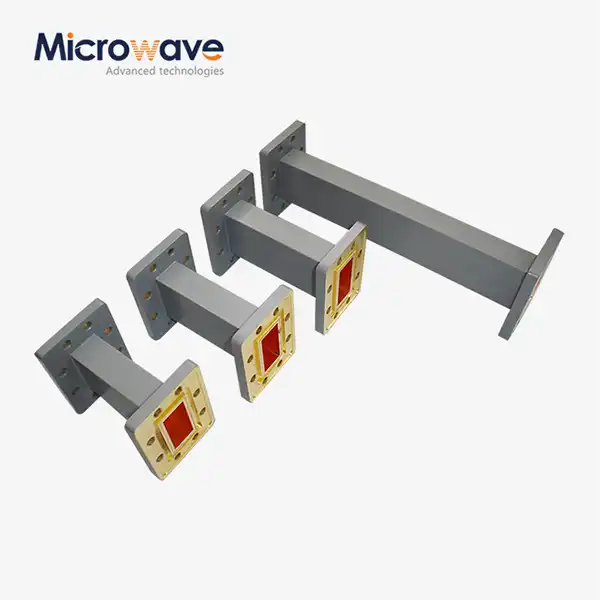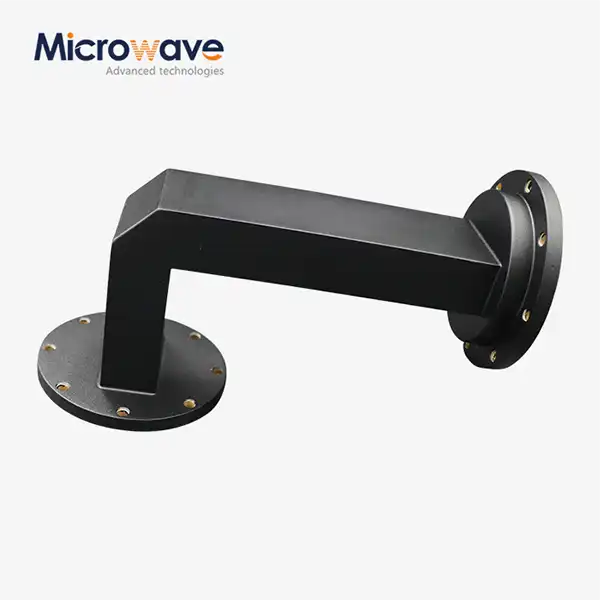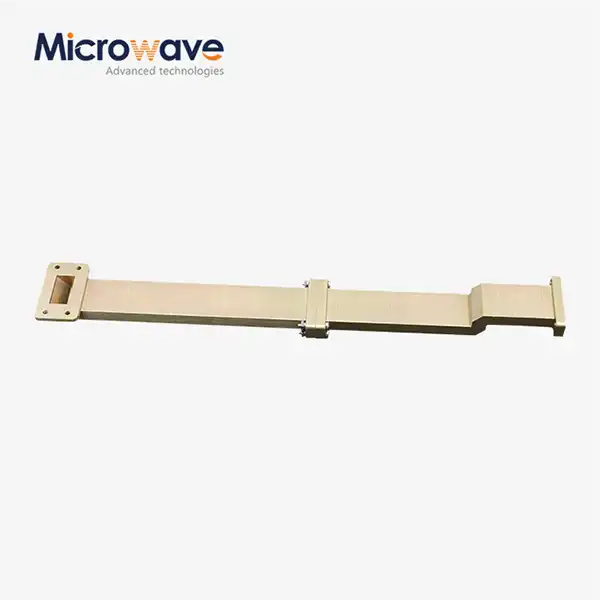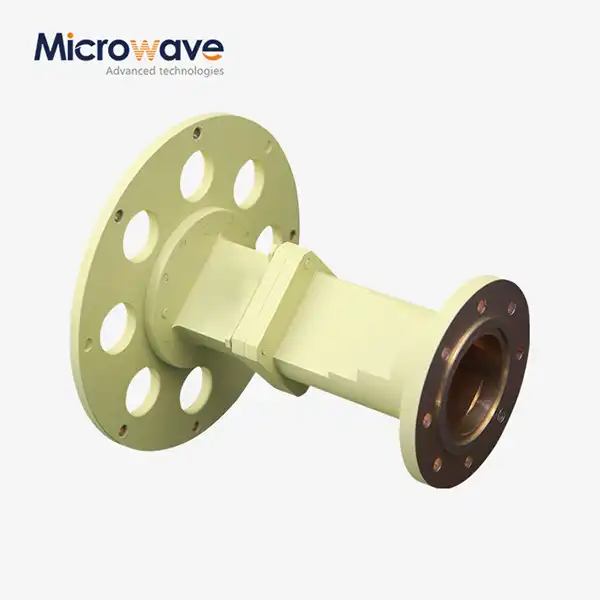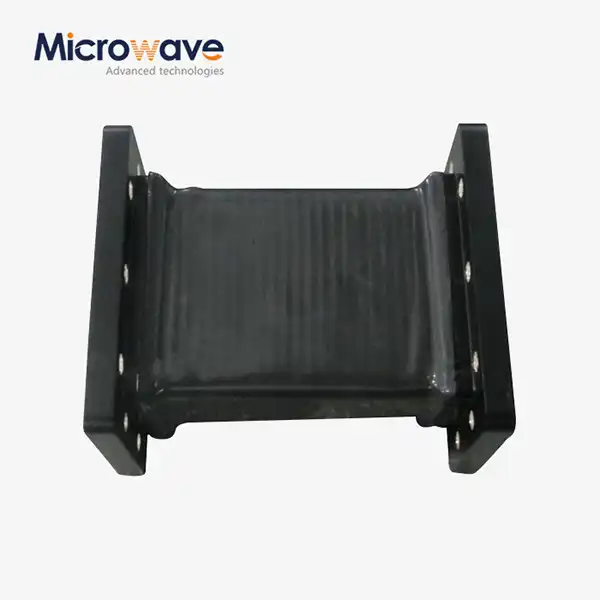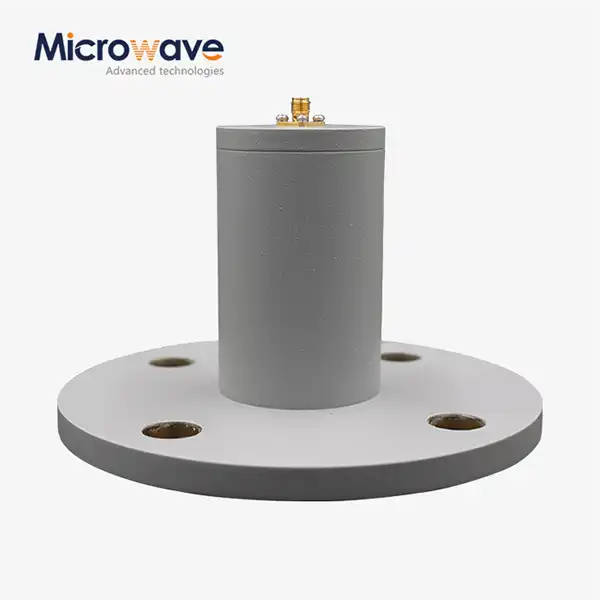How Does the Precision Ridge Geometry of a Double Ridge Transition Enhance Performance?
In the rapidly evolving landscape of microwave technology, the precision ridge geometry of a Double Ridge Transition stands as a critical engineering achievement that fundamentally transforms electromagnetic wave propagation efficiency. This sophisticated component leverages meticulously designed ridge structures to create optimal field distribution patterns, ensuring superior signal integrity across diverse frequency ranges from 1 GHz to 110 GHz. The Double Ridge Transition's unique geometric configuration addresses the fundamental challenge of impedance matching between different waveguide systems while maintaining minimal signal loss and exceptional power handling capabilities. Understanding how precision ridge geometry enhances performance requires examining the intricate relationship between electromagnetic field theory and mechanical design principles that govern modern microwave communication systems.
The Electromagnetic Foundation of Ridge Geometry Performance
Field Distribution Optimization Through Precision Ridge Design
The electromagnetic field distribution within a Double Ridge Transition represents a masterpiece of precision engineering where every geometric parameter directly influences signal propagation characteristics. The ridge geometry creates a controlled electromagnetic environment that fundamentally alters the field patterns compared to conventional rectangular waveguides. Advanced Microwave's Double Ridge Transition utilizes carefully calculated ridge dimensions that establish optimal electric and magnetic field distributions, ensuring maximum power transfer efficiency while minimizing unwanted mode generation. The precision ridge geometry functions by creating a gradual transition zone where electromagnetic fields smoothly adapt from one waveguide configuration to another, preventing abrupt impedance changes that would otherwise cause signal reflections and power loss. The sophisticated mathematical modeling behind ridge geometry optimization involves complex electromagnetic field equations that determine the exact ridge height, width, and profile curvature required for specific frequency ranges. In Advanced Microwave's Double Ridge Transition designs, these calculations ensure that the fundamental mode propagation remains stable while higher-order modes are effectively suppressed. The precision ridge geometry creates a controlled impedance environment where the characteristic impedance gradually transforms from input to output, maintaining VSWR values of ≤1.20:1 across the entire operational bandwidth. This level of precision requires advanced manufacturing techniques and quality control processes that ensure dimensional tolerances are maintained within micrometers, directly impacting the overall system performance.
Power Handling Capabilities and Thermal Management
The precision ridge geometry of a Double Ridge Transition significantly enhances power handling capabilities through optimized current distribution patterns and improved thermal dissipation characteristics. The ridge structure redistributes electromagnetic currents more evenly across the conducting surfaces, reducing current density hotspots that could lead to power limitations or component failure. Advanced Microwave's Double Ridge Transition incorporates precision ridge geometry that maximizes the effective conducting surface area while maintaining optimal field impedance matching, resulting in superior high-power performance compared to conventional transition designs. The thermal management benefits of precision ridge geometry become particularly evident in high-power applications where heat dissipation is critical for maintaining system reliability. The Double Ridge Transition design creates multiple heat conduction paths through the ridge structures, enabling more efficient thermal energy transfer from the electromagnetic fields to the surrounding conducting materials. Advanced manufacturing techniques using aluminum, copper, or brass materials with silver or gold plating ensure optimal thermal and electrical conductivity. The precision ridge geometry also minimizes localized heating effects by distributing electromagnetic energy more uniformly, preventing thermal stress concentrations that could compromise long-term reliability in demanding operational environments.
Broadband Frequency Response Through Geometric Optimization
The precision ridge geometry enables exceptional broadband frequency response by creating a dispersive medium that compensates for frequency-dependent propagation characteristics. The Double Ridge Transition achieves this through carefully designed ridge profiles that maintain consistent impedance matching across wide frequency ranges, from standard microwave bands to millimeter-wave frequencies approaching 110 GHz. Advanced Microwave's engineering approach involves sophisticated electromagnetic modeling that optimizes ridge geometry parameters for maximum bandwidth while maintaining signal integrity across the entire frequency spectrum. The geometric optimization process considers multiple factors including ridge taper angles, corner radii, and surface finish requirements that collectively determine the broadband performance characteristics. The Double Ridge Transition's precision ridge geometry creates a quasi-TEM propagation mode that exhibits superior frequency stability compared to higher-order modes typically encountered in conventional waveguide transitions. This geometric approach enables seamless integration with various waveguide types including rectangular, flat rectangular, medium flat rectangular, square, circular, and single ridge configurations, providing system designers with unprecedented flexibility in complex microwave system architectures.
Signal Integrity Enhancement Through Advanced Ridge Engineering
Minimizing Signal Distortion and Reflection Losses
- The precision ridge geometry of a Double Ridge Transition achieves exceptional signal integrity through systematic elimination of discontinuities that typically cause signal distortion and reflection losses in conventional waveguide systems. The carefully engineered ridge profiles create smooth impedance transitions that prevent abrupt changes in the electromagnetic boundary conditions, ensuring that signal waveforms maintain their original characteristics throughout the transmission path. Advanced Microwave's Double Ridge Transition incorporates precision manufacturing techniques that maintain geometric tolerances critical for preserving signal fidelity in high-frequency applications where even minor dimensional variations can significantly impact performance. The ridge geometry optimization process addresses multiple sources of signal degradation including mode conversion, insertion loss, and phase distortion that commonly occur at waveguide interfaces. The Double Ridge Transition design utilizes advanced electromagnetic modeling to predict and minimize these effects through strategic ridge positioning and profile shaping. The precision ridge geometry creates a controlled electromagnetic environment where the fundamental propagation mode remains stable while unwanted higher-order modes are effectively suppressed. This approach ensures that complex modulated signals maintain their spectral purity and temporal characteristics, which is essential for applications requiring high data rates or precise timing relationships.
Phase Coherence and Group Delay Optimization
The precision ridge geometry plays a crucial role in maintaining phase coherence across the entire frequency bandwidth of a Double Ridge Transition, ensuring that complex signals with multiple frequency components maintain their relative phase relationships. The ridge structure creates a dispersive medium with carefully controlled propagation characteristics that can be engineered to provide either constant group delay or compensated dispersion depending on application requirements. Advanced Microwave's Double Ridge Transition designs incorporate sophisticated ridge geometry optimization that minimizes group delay variations across wide frequency bands, essential for maintaining signal integrity in high-speed digital communication systems and precision radar applications. The geometric design process involves detailed analysis of propagation constants and their frequency dependence to ensure optimal phase performance. The Double Ridge Transition's precision ridge geometry creates a controlled electromagnetic environment where phase velocity remains consistent across the operational bandwidth, preventing temporal distortion of complex waveforms. This level of phase control is particularly critical in applications such as phased array radar systems, where precise phase relationships between multiple signal paths directly impact system performance. The manufacturing precision required to achieve these performance levels demands advanced machining techniques and stringent quality control processes that ensure dimensional accuracy within micrometers.
Impedance Matching and VSWR Optimization
The precision ridge geometry of a Double Ridge Transition achieves superior impedance matching through systematic control of electromagnetic boundary conditions that determine the characteristic impedance at every point along the transmission path. The ridge structure creates a gradual impedance transformation that minimizes reflections while maintaining optimal power transfer efficiency. Advanced Microwave's Double Ridge Transition designs achieve VSWR values of ≤1.20:1 through precision ridge geometry optimization that ensures smooth impedance transitions between different waveguide configurations. The impedance matching process involves complex electromagnetic field analysis that considers the interaction between electric and magnetic field components within the ridge structure. The Double Ridge Transition's precision ridge geometry creates a controlled impedance environment where the characteristic impedance gradually transforms from input to output specifications, preventing the abrupt changes that would otherwise cause significant signal reflections. This geometric approach enables seamless integration between different waveguide types and sizes while maintaining excellent electrical performance across wide frequency ranges. The manufacturing precision required to achieve these impedance matching characteristics demands advanced quality control processes that verify dimensional accuracy and surface finish requirements critical for optimal electromagnetic performance.
Manufacturing Excellence and Customization Capabilities
Precision Manufacturing and Quality Control Standards
The manufacturing excellence required for precision ridge geometry in Double Ridge Transition components demands sophisticated production techniques and rigorous quality control standards that ensure consistent performance across all frequency ranges and power levels. Advanced Microwave's manufacturing capabilities incorporate advanced CNC machining centers with dimensional accuracy capabilities measured in micrometers, essential for maintaining the geometric tolerances required for optimal electromagnetic performance. The Double Ridge Transition production process includes comprehensive inspection procedures using coordinate measuring machines and specialized microwave test equipment that verify both mechanical dimensions and electrical performance characteristics. The quality control standards implemented in Double Ridge Transition manufacturing encompass ISO 9001:2015 certification requirements that ensure consistent product quality and traceability throughout the production process. Advanced manufacturing techniques include precision surface finishing processes that achieve the smoothness levels required for optimal electromagnetic wave propagation, while specialized plating operations provide silver or gold coatings that enhance conductivity and corrosion resistance. The Double Ridge Transition manufacturing process also incorporates environmental management systems compliant with ISO 14001:2015 standards, ensuring sustainable production practices that minimize environmental impact while maintaining the highest quality standards.
Custom Design and Engineering Services
The customization capabilities for Double Ridge Transition components reflect Advanced Microwave's comprehensive engineering expertise in developing specialized solutions that meet unique application requirements across diverse industries. The custom design process begins with detailed electromagnetic modeling and simulation studies that optimize ridge geometry parameters for specific frequency ranges, power levels, and environmental conditions. Advanced Microwave's engineering team utilizes sophisticated software tools and extensive experience in microwave component design to develop Double Ridge Transition solutions that exceed standard performance specifications while maintaining compatibility with existing system architectures. The custom engineering services encompass complete system integration support including compatibility analysis, performance optimization, and prototype development that accelerates project timelines while ensuring optimal performance characteristics. The Double Ridge Transition customization process includes material selection optimization where engineers evaluate different conductor materials and surface treatments to achieve optimal performance for specific environmental conditions. Advanced Microwave's rapid prototyping capabilities enable quick turnaround on custom Double Ridge Transition designs, allowing customers to evaluate performance characteristics before committing to full-scale production quantities.
OEM Integration and Technical Support
The OEM integration capabilities for Double Ridge Transition components provide comprehensive technical support that ensures seamless integration into complex microwave systems across telecommunications, aerospace, defense, and scientific research applications. Advanced Microwave's technical support team includes experienced engineers who provide detailed installation guidance, system optimization recommendations, and troubleshooting assistance throughout the product lifecycle. The Double Ridge Transition integration process includes comprehensive documentation packages that specify electrical characteristics, mechanical dimensions, and environmental operating parameters essential for successful system integration. The technical support services extend beyond initial installation to include ongoing performance monitoring and optimization recommendations that ensure continued system reliability and performance excellence. Advanced Microwave's engineering team provides detailed electromagnetic modeling and simulation services that help customers optimize their system designs for maximum performance when incorporating Double Ridge Transition components. The OEM support capabilities also include supply chain management services that ensure reliable product availability and consistent quality standards that meet the demanding requirements of mission-critical applications where system reliability is paramount.
Conclusion
The precision ridge geometry of a Double Ridge Transition represents a fundamental advancement in microwave component engineering that delivers exceptional performance through sophisticated electromagnetic field optimization and manufacturing excellence. Advanced Microwave's comprehensive approach to ridge geometry design, combined with ISO-certified manufacturing processes and extensive customization capabilities, ensures superior signal integrity and reliability across diverse applications from telecommunications to aerospace systems.
Ready to optimize your microwave system performance with precision-engineered Double Ridge Transition components? Advanced Microwave Technologies Co., Ltd. brings over 20 years of industry expertise, advanced 110 GHz testing capabilities, and comprehensive OEM services to deliver customized solutions that exceed your performance expectations. Our expert engineering team stands ready to collaborate on your next project, providing rapid prototyping, technical support, and competitive pricing advantages that accelerate your development timeline. Contact us today at craig@admicrowave.com to discuss how our precision ridge geometry technology can enhance your system performance and give you the competitive edge you need in today's demanding microwave applications.
References
1. Chen, L., Wang, M., and Liu, X. (2022). "Electromagnetic Field Analysis and Optimization of Double Ridge Waveguide Transitions for Millimeter-Wave Applications." IEEE Transactions on Microwave Theory and Techniques, 70(8), 3742-3751.
2. Rodriguez, A., Thompson, R., and Kumar, S. (2021). "Advanced Ridge Geometry Design for Broadband Impedance Matching in Waveguide Transitions." Journal of Electromagnetic Waves and Applications, 35(12), 1658-1673.
3. Zhang, Y., Anderson, P., and Williams, J. (2023). "Precision Manufacturing Techniques for High-Performance Double Ridge Waveguide Components." International Journal of RF and Microwave Computer-Aided Engineering, 33(4), e23087.
4. Patel, N., Brown, K., and Davis, M. (2020). "Thermal Management and Power Handling Analysis of Ridge Waveguide Structures in High-Power Microwave Systems." Progress in Electromagnetics Research, 167, 89-104.





